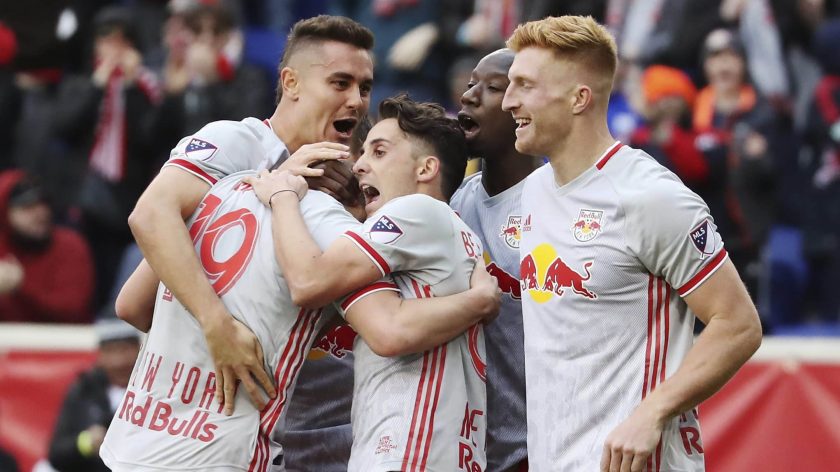New York Red Bulls are taking their crossing game to another level

New York Red Bulls are scoring on many crosses this season, even at a higher rate than last year so far. It sets up an interesting goal-scoring narrative.
Is it the New York Red Bulls or the Red Cross we’re currently watching this season?
You don’t have to be a soccer expert to pinpoint how valuable crossing the ball has been for the Red Bulls in their first two MLS matches of the season: a 1-1 draw with Columbus Crew SC and a 4-1 victory over San Jose Earthquakes.
All of the Supporters’ Shield champions’ five goals this MLS season have come from crosses. In their league opener against the Crew, Andreas Ivan shouldered, or misheaded Florian Valot’s cross in the net.
On Saturday versus San Jose, Alex Muyl banged Daniel Royer’s cross home to score the team’s first goal of the encounter in the 51st minute.
However on this goal, the initial plan wasn’t to cross the ball. New York charged in the middle of the pitch before Bradley hit a shot from outside the 18. Earthquakes keeper Daniel Vega palmed Bradley Wright-Phillips’s shot away toward the left side of the box, which set up Royer for the cross.
On the second goal, The Metros’ intention was to attack San Jose down the flank. The team performed a well-planned free-kick that saw Sean Davis push the ball to Royer down the right wing.
[sc name=”Other NYC Teams” ]The Austrian’s eventual cross was deflected but still found its way to Muyl, who acrobatically hit it in the net in the 71st minute. Yes, RBNY is even using free kicks to run down the wing and cross the ball.
Later in the 85th minute, Wright-Philips buried Davis’ low cross past Vega before Royer poked Michael Amir Murillo’s cross in the net in the 90th minute.
New York’s primary scoring method in the Scotiabank CONCACAF Champions’ League was crossing the ball as well. Three of the team’s seven goals in the CCL resulted from crosses. So in total, Chris Armas’s men used crosses to net seven of their 11 goals so far this season.
New York didn’t start using this system this season. It was also part of their game plan last year. But so far this campaign, the Red Bulls have been far more successful at hitting their opponents’ net via crosses.
The team has the right players to use this system. Royer is a skillful winger with great crossing abilities. We saw that against San Jose when the midfielder notched two assists. The team’s starting fullbacks, Murillo and Kemar Lawrence, are the perfect players to play New York’s system as well. Both defenders are attacking-minded with dazzling speed and remarkable aerial passing skills.
As productive the Red Bulls’ crossing game has been for them, it also has its negativities. Via the goal they conceded versus San Jose, most of the Red Bull players were on the left flank which left Magnus Eriksson unmarked in the middle of the field when he sent Cristian Espinoza on goal.
In every successful gameplan, there are ups and downs. Will the New York Red Bulls be able to limit the downs and win a major silverware this season?
[sc name=”Generic Link Next” link=”https://elitesportsny.com/2019/03/16/new-york-red-bulls-chris-armas-did-not-include-kaku-due-to-internal-issue/” text=”Chris Armas Didn’t Include Kaku Due To ‘Internal Issues'” ]Originally from Haiti, Ralph 'Onz' Chery started his writing career as a City College of New York student with The Campus. He also wrote for First Touch, the Cosmopolitan Soccer League and other local leagues. After graduating, Onz started covering the New York Red Bulls for ESNY and joined Haitian Times.





